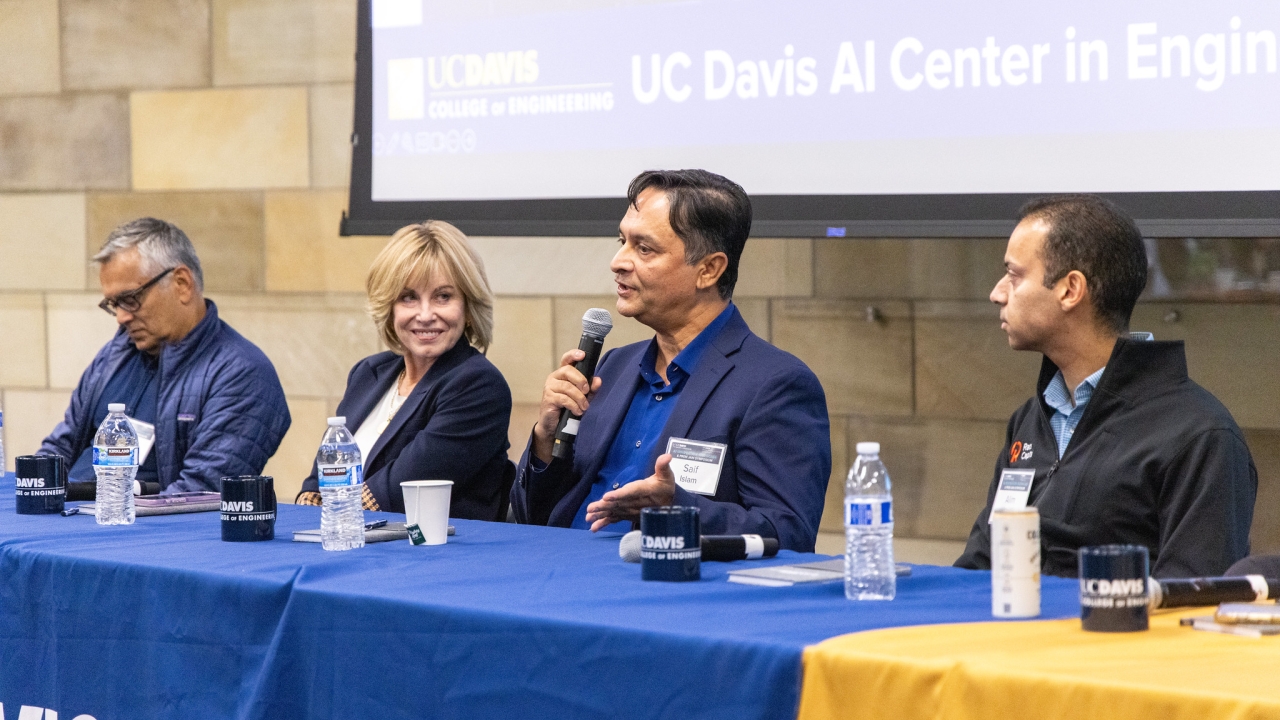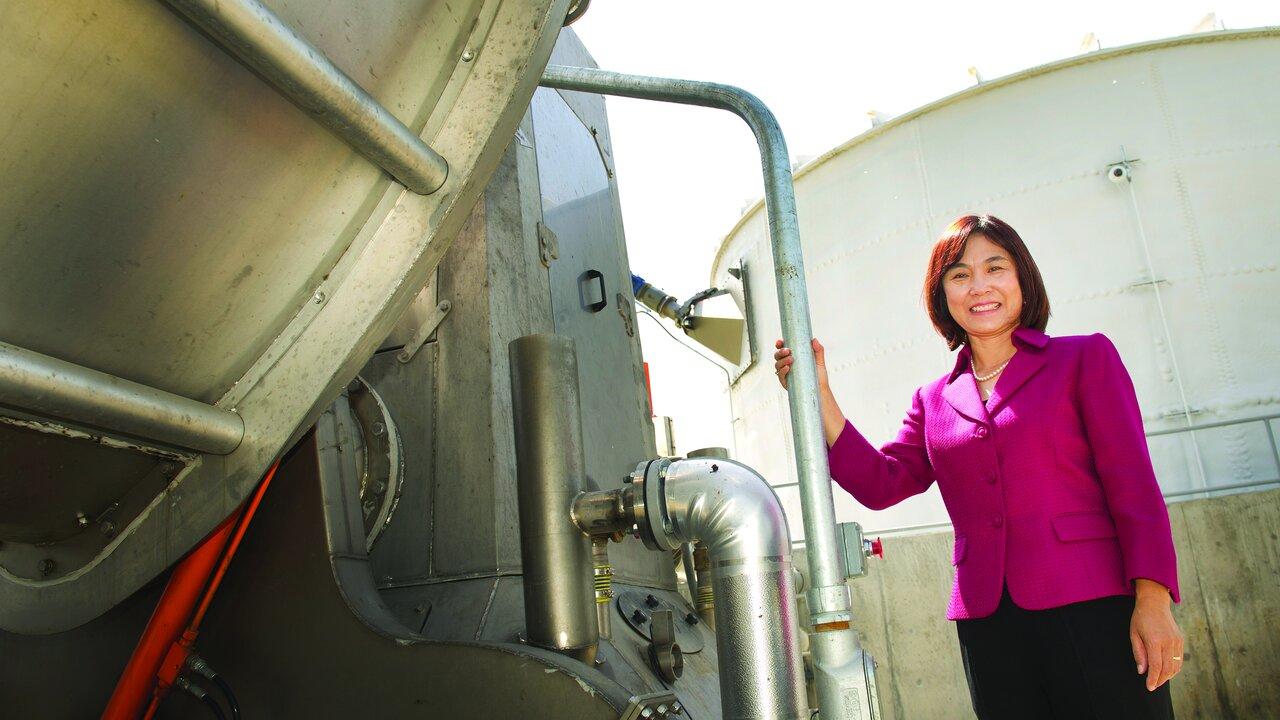
UC Davis Engineers Fight Food Insecurity through Sustainable Agriculture
By Noah Pflueger-Peters and Constanze Ditterich
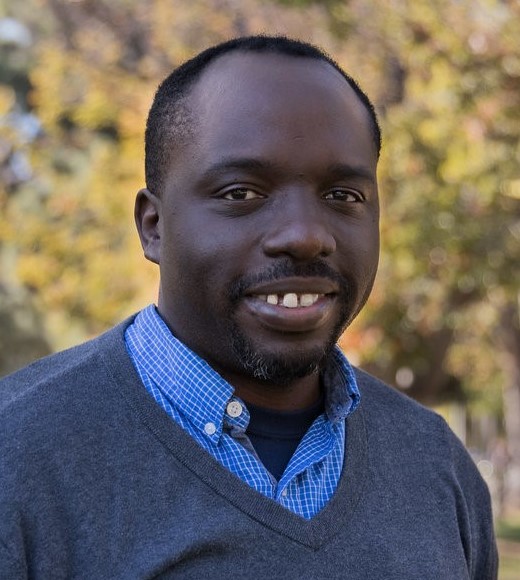
With the dawn of agriculture, humans became dependent on food production systems that exploit nature’s limited resources of land, water and air. As the world’s population is expected to reach 9–10 billion by 2050 according to the U.N., the world must double food production to meet demand while using and reusing the resources we have left in a sustainable manner.
Ruihong Zhang and Isaya Kisekka at UC Davis are rising to meet the challenge by finding new ways to sustainably produce food, while conserving resources by using microbes to produce new sources of protein and managing and irrigating crops with pinpoint precision.
“We really need to think hard about how to be climate-smart and optimize our resources,” said Kisekka.
Harnessing the power of microbes
Zhang, professor of biological and agricultural engineering, says one way to produce food more sustainably is by tapping into the huge potential of microbes like fungi and algae. Growing livestock is an expensive and time-consuming process due to the land, resources and time that are needed, leading to a huge carbon footprint. By contrast, microbes such as fungi and algae can grow in less than a week in any climate and require a small fraction of the space and resources.
“We want society to start paying more attention to microbes as alternative food sources,” she said. “There are a lot of benefits environmentally and economically, especially for populations who live in areas that have very limited land for growing crops.”
Eating fungi and algae is nothing new, as mushrooms and seaweed are staples of diets around the world. Zhang plans to innovate by harvesting these microbes using agricultural byproducts such as almond hulls and carrot and tomato pomace, the material that’s left over after pressing for juice or oil. This method improves the sustainability of the entire food production system, as what was once waste gets broken down into sugars and other nutrients that help grow the microbes, which are then processed into more food.
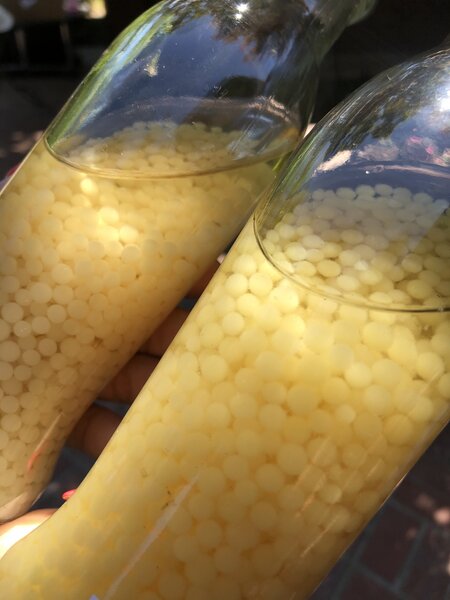
By studying the fungi Asperigullus awamori, an edible fungi already used by the food industry for fermentation, and the microalgae Chlorella sorokiniana, which can be grown quickly with or without sunlight, Zhang and her graduate students hope to extract the high level of nutrients in both microbes for a sustainable food source. These microbes contain anywhere between 20 and 60 percent protein and provide all essential amino acids, along with beneficial lipids, dietary fibers and vitamins that make them healthy and easily digestible.
“These microbe-based foods have their unique nutrients and nutritional value that you don’t find from meat or other protein sources—even different from some plant-based protein,” she said.
Zhang is already well known for her work using microbes to convert agricultural waste into renewable natural gas, biopolymers or chemicals. Most notably, she developed UC Davis’ Renewable Energy Anaerobic Digester (READ), which uses bacteria to turn campus’ organic waste into energy. For her and her team, using microbes to make food is simply another extension of this type of work.
Last year, a biological systems engineering senior design team Zhang mentored successfully turned raw fungal protein into crunchy snacks and algae proteins into alternative hamburgers. She also plans to continue testing the microbes in her lab to optimize growth processes and better understand their nutritional value and how they can be used as food. She and her students also recently conducted a pilot study focused on the production of microalgae from READ’s digestates.
“The more that I do, the more excited I am. I really see a huge potential for using microbes to grow food, break down waste and help the environment,” she said. “There’s a lot of power in that.”
Making the most of resources
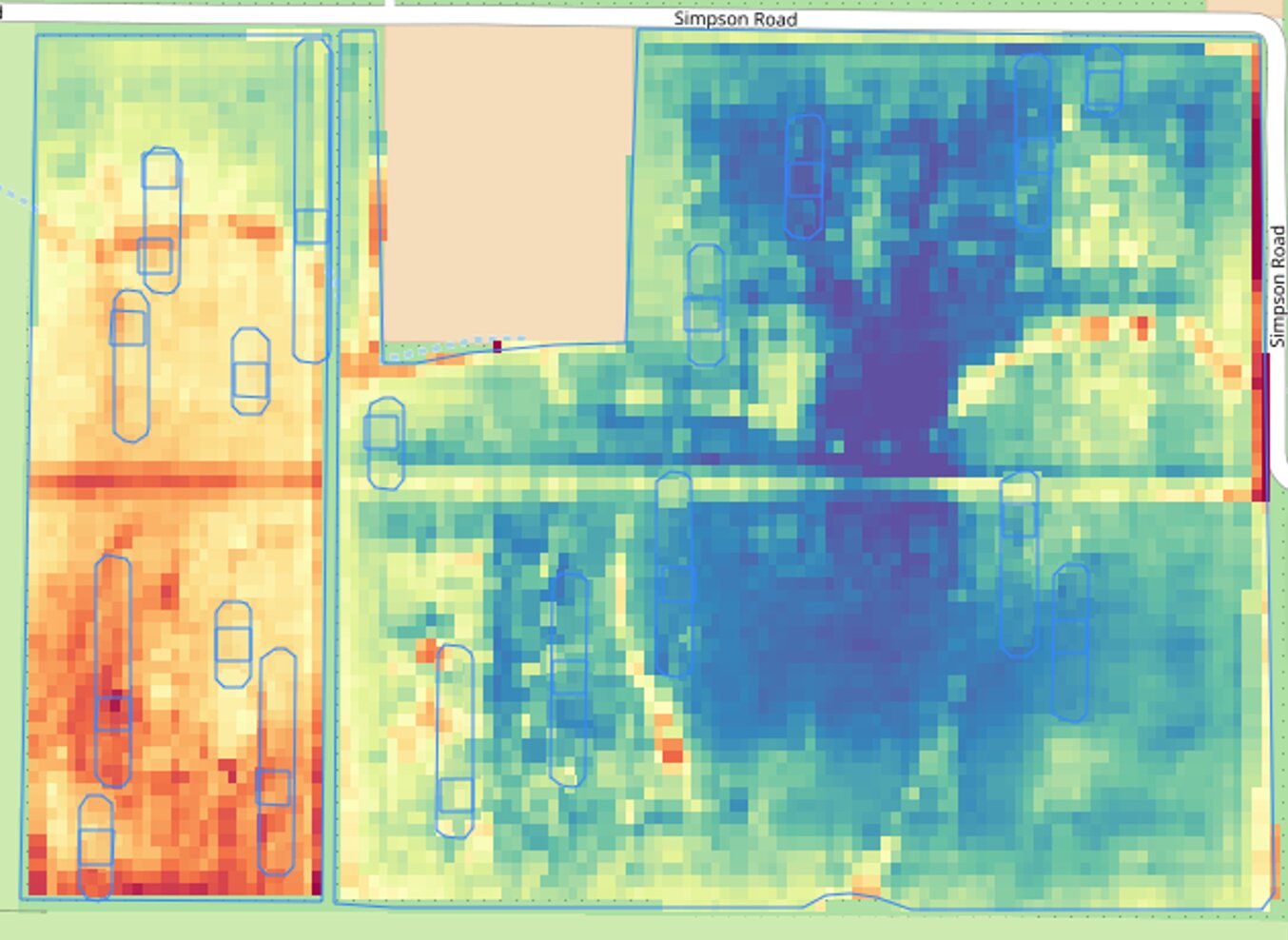
In the U.S., California is king in agriculture, but the state’s susceptibility to climate change-induced drought makes the over $46 billion industry vulnerable.
“If you are growing an annual crop, you can say, ‘I’m not going to plant this year,’ but if you’re growing trees, you’re locked in for 25 years,” said biological and agricultural engineering associate professor Isaya Kisekka. “When you have these extreme droughts, you really have a very limited number of tools in your toolbox to adopt.”
Growers face limited options: buy water, which can be extremely expensive, pump groundwater, a practice that’s now heavily regulated, or make the most of existing resources through methods like regulated deficit irrigation. As an expert in precision irrigation, Kisekka and his team work with farmers to develop smart irrigation systems and management strategies that use water and fertilizer as efficiently as possible without damaging the environment.
Developing a precision irrigation system means understanding an orchard on a very detailed level from the soil upwards. Even within 1,000 acres, the type of soil can vary a lot and make some parts of an orchard produce differently than others. Kisekka’s team helps growers figure this out by mapping the soil texture and quality across an orchard, which tells them how well it can hold water.
“Each farm is different,” he said. “If you have an orchard that yields very high in one corner and low in another corner, you shouldn’t be giving the entire orchard the same water because you’re going to waste water, nutrients and energy.”

After mapping the soil, the teams run a wide range of computer simulations on the orchard to predict how the crop will grow in response to different irrigation management strategies, soils and climates. They also consider the potential environmental impact, as precision irrigation can negatively affect both soil and groundwater quality through salt buildup in the roots.
“If you use these highly-efficient systems without thinking about large-scale impacts at the watershed scale, you’re going to overdraft groundwater, so we need to couple these precision techniques with sustainable practices,” he said.
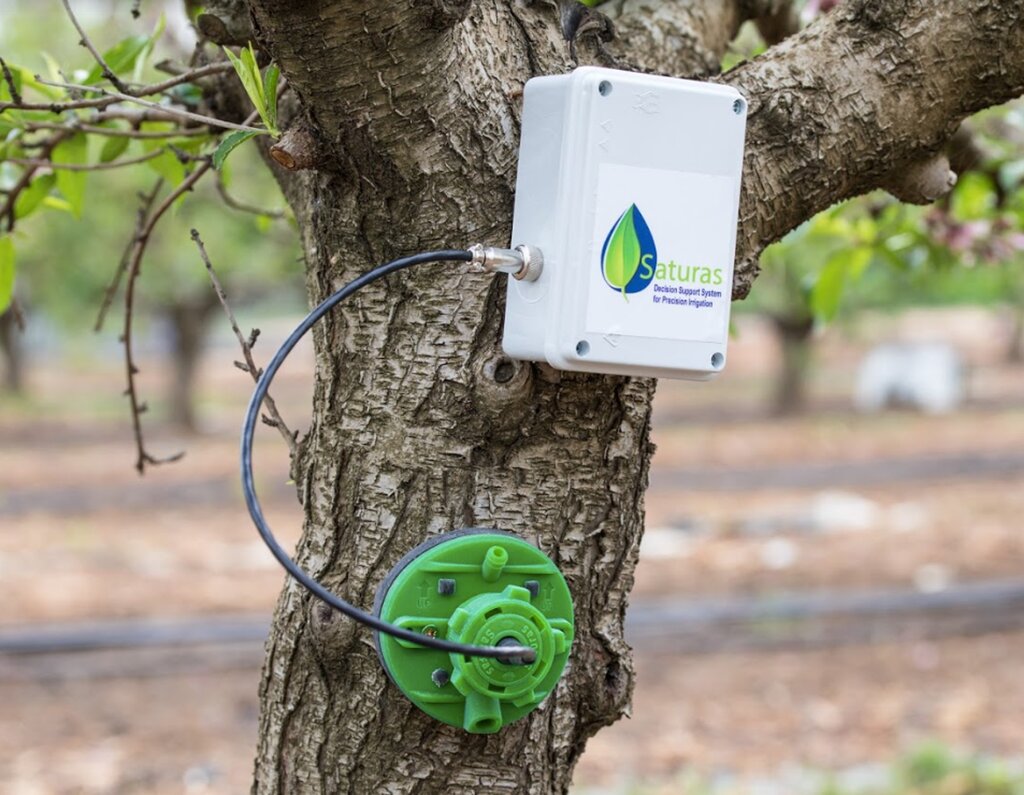
The team then leverages sensing and automation technologies to learn more about the specific plants and water flow in the field to optimize the entire production system. All of these data coming from the various sensors are fed into simulations, which use biophysical models and artificial intelligence to recommend an optimal irrigation schedule for a specific area of an orchard. With this information, growers can ensure they grow the same crops using fewer resources and with a lower carbon footprint.
“Right now, we’re in the age of data, so growers can really take advantage of all data coming back from all these different sensing platforms to grow crops sustainably,” he said.
This story was featured in the Fall 2020 issue of Engineering Progress.

